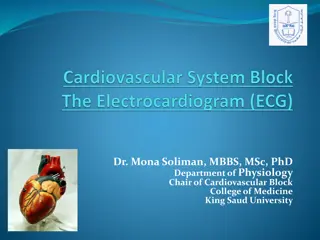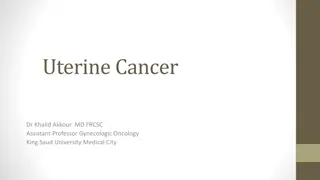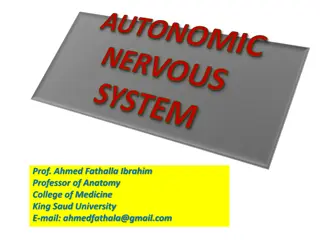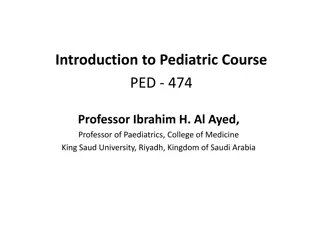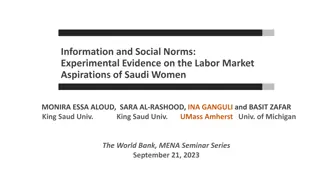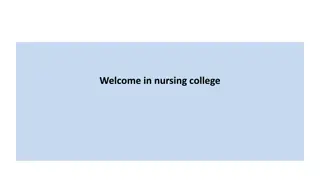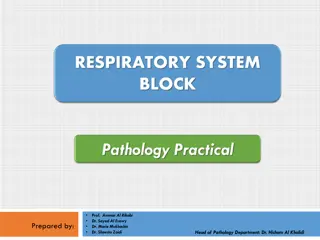King Saud University
A community is defined by shared values and culture, enabling interaction and collaboration. Community health assessments aid in understanding health problems within specific communities to plan effective interventions that consider the community context and recipients.
Download Presentation

Please find below an Image/Link to download the presentation.
The content on the website is provided AS IS for your information and personal use only. It may not be sold, licensed, or shared on other websites without obtaining consent from the author.If you encounter any issues during the download, it is possible that the publisher has removed the file from their server.
You are allowed to download the files provided on this website for personal or commercial use, subject to the condition that they are used lawfully. All files are the property of their respective owners.
The content on the website is provided AS IS for your information and personal use only. It may not be sold, licensed, or shared on other websites without obtaining consent from the author.
E N D
Presentation Transcript
King Saud University College of Business Administration Department of Health Administration Masters` Program PA 519 Health Programs Planning and Evaluation Second Semester 1439/ 1440 Mohammed S. Alnaif, Ph D. alnaif@ksu.edu.sa 2/16/2025 Mohammed S Alnaif 1
Community Health Assessment for Program Planning Defining A Community A community encompasses people and some form of proximity or place that enables interaction, and that interaction leads to shared values or culture. Without the potential for interaction, sharing of values and norms cannot occur. Interaction can be virtual as well as person to person. 2/16/2025 Mohammed S Alnaif 2
Community Health Assessment for Program Planning Defining A Community To the extent that a large number of interacting individuals share values and culture, a community can exist. Another defining characteristic of a community is that members have shared values and norms of behavior. The distinction between a convenient geographic designation and an actual community is important for planning. Individuals sense of community varies according to their race/ethnicity and income. 3 2/16/2025 Mohammed S Alnaif
Community Health Assessment for Program Planning Community as Context and Intended Recipient When a health program targets a community for the intervention, the health program may intend some or all of the community members to receive the health program. Community assessments or community needs assessments are processes by which planners seeks to understand and describe the health problem more fully. The word community is used whether or not a community or a population is being assessed. 4 2/16/2025 Mohammed S Alnaif
Community Health Assessment for Program Planning Community as Context and Intended Recipient However, if an actual community in contrast to a population or an aggregate is the focus, planners must clarify the boundaries of the community membership if they are truly to understand the specific health and social conditions within the community. Collaboration creates interaction, which can intensify the sense of community and promote synergy among the community representatives the agencies sponsoring the health program, and the program staff. 5 2/16/2025 Mohammed S Alnaif
Community Health Assessment for Program Planning Defining Term Based on Focused and Driven Three terms related to community need to be defined in any discussion of community health planning: Community based, Community focused, and Community driven. 6 2/16/2025 Mohammed S Alnaif
Community Health Assessment for Program Planning Defining Term Based on Focused and Driven Community based is adjective describing where a program or service is provided. A health program is community based if it is delivered at locations considered within the boundaries of the community. Community focused refers to the way in which the program is designed. Health programs that seek to affect the community as a whole, as a unit, are best described as community focused. Community driven program is a health program that result from the involvement of community members and their preferences and needs. 7 2/16/2025 Mohammed S Alnaif
Figure 3-1. Connections Among Program Agency and Community Health Program Planning and Evaluation Health Services Agencies and Organization Community at Large: Target Audience, Stakeholders 8 2/16/2025 Mohammed S Alnaif
Community Health Assessment for Program Planning Defining Term Based on Focused and Driven Three points are worth noting about these qualifiers. First, the terms based, focused, and driven are not mutually exclusive (FIGURE 3-2) Second, the degree to which a program is community based, community focused, or community driven can vary. Each can vary independently of the other. Third, the designation of based, focused, and driven can also apply to families, populations, or other aggregates. 9 2/16/2025 Mohammed S Alnaif
(FIGURE 3-2) Venn Diagram of Community-Based, Community-Focused, and Community-Driven Community based Community focused Community driven 10 2/16/2025 Mohammed S Alnaif
Community Health Assessment for Program Planning Medical Concepts of Need The need for medical services usually refers to a normative professional and medical judgment concerning the quantity of medical services a given population and its members ought to consume over a specific period of time. It relates to professionally determined indications of biological and psychological deviations from the normal state of health, even though the individual or family involved may consider this to be a normal condition. 11 2/16/2025 Mohammed S Alnaif
Community Health Assessment for Program Planning Medical Concepts of Need Since there are some established measures that can be applied to assess the need for health care services, need is usually considered more objective than the demand for health services. Some of these measures include morbidity and mortality data, as well as disabilities that limit activities. However, a population's "needs" for medical services may not be very easy to specify. 12 2/16/2025 Mohammed S Alnaif
Community Health Assessment for Program Planning Medical Concepts of Need Three requirements for an accurate specification of needs, perfect knowledge of the health status of all members in the population; a well defined standard of what constitutes a "good health;" and a perfect knowledge of what modern medicine can do to improve the health status of the population to meet these standards. Health status is multidimensional and the existing diagnostic procedures are not capable of providing perfect knowledge either about the health status of a population or the outcome of medical services. 2/16/2025 Mohammed S Alnaif 13
Community Health Assessment for Program Planning Medical Concepts of Need In addition there is a lack of consensus among professionals as to what constitutes a "good health". In spite of these difficulties, it is possible to obtain fairly accurate estimates of a given population's needs for medical services. Health care services represent a very broad spectrum of services, and the need for some of these services can be defined more accurate than others (e.g., prenatal care and immunization). 14 2/16/2025 Mohammed S Alnaif
Community Health Assessment for Program Planning Medical Concepts of Need In addition, the need for medical services may vary within a given population. In a country like the U.S. which consist of a multicultural society needs for medical services are not the same for all segments of the population. These variations are the result of many factors which may include lifestyle factors, such as diet, sleep, and other individual behaviors; environmental factors, such as air, and water supply; socioeconomic factors; genetic factors; and medical care, such as the availability and prices of services (e.g., the gap in infant mortality rate between whites and non-whites). 2/16/2025 Mohammed S Alnaif 15
Community Health Assessment for Program Planning Consumer Concepts of Need The need for medical services as perceived by a population or an individual relates more to the concept of "want" rather than need. A population's wants for medical services may differ from their actual needs. A population's wants is usually defined from individuals' perspectives rather than professionals' opinion. Thus, want is the quantity of medical services which individuals feel they ought to consume over a relevant time period based on their perceptions of their health needs and will depend on cultural, religious, educational, and social status of the individual. 16 2/16/2025 Mohammed S Alnaif
Community Health Assessment for Program Planning Consumer Concepts of Need This may indicates that there is a gap between health needs as they are defined by the medical profession and as they are perceived by individuals (wants). As a result the quantity of medical services wanted could be greater or less than the quantity needed. There are several reasons responsible for this gap which may include consumer ignorance, uncertainty concerning the potential benefits of certain medical services, as well as the pain and suffering or embarrassment associated with the therapy or the delivery of services. 17 2/16/2025 Mohammed S Alnaif
Community Health Assessment for Program Planning Consumer Concepts of Need Consumers' wants usually serve as the basis for converting needs into demands. The success and failure of this conversion usually depends on the amplitude of motives and constraints present in the health care system. Demand, represents the subset of wants that individuals are willing to act upon. Therefore, it requires a willingness to sacrifice time, money, or goods in exchange for the product or service. 18 2/16/2025 Mohammed S Alnaif
Community Health Assessment for Program Planning Consumer Concepts of Need This relationship should be considered by health care planners who seek to promote congruence between needs and wants, and make sure that this congruence is converted into effective demand. The medical profession defines demand as the quantity of services demanded if there were no barriers to the system. The quantity of services demanded by a given population depends on the levels of the determents of demand, which may include consumers tastes and preference (collective consumer wants), the demographics and size of the population, and the knowledge and financial capability of the consumers. 19 2/16/2025 Mohammed S Alnaif
Community Health Assessment for Program Planning The Concept of Demand The demand for health services takes place when needs or (perceived needs) are converted into delivery of services. The quantity of health services that is actually used is referred to as realized demand, but this quantity does not necessarily mean that it is an effective demand. An effective economic demand takes place when actual needs of the population are met. Thus demand can be ineffective, when the quantity of health services demanded exceeds or fall short of actual needs. This means that demand and need for health services do not always have a one-to-one relationship. 20 2/16/2025 Mohammed S Alnaif
Community Health Assessment for Program Planning Types of Needs Four types of needs ought to be considered in a needs assessment. 1. Expressed need is the problem revealed through health care seeking behavior. Expressed need is manifested as the demand for services and the market behavior of the target audience. Measures of expressed need include the number of people who request services, the type of services sought, and utilization rate. 21 2/16/2025 Mohammed S Alnaif
Community Health Assessment for Program Planning Types of Needs Four types of needs ought to be considered in a needs assessment. 2. Normative need is a lack, deficit, inadequacy, or excess as defined by expert and health professionals, usually based on a scientific notion of what ought to be or what the ideal is from a health perspective. A normative shortage exists when the quantity needed exceeds the quantity demanded. It is more important because it present a great challenge to health professionals as well as policy makers, and may always exist at various levels 22 2/16/2025 Mohammed S Alnaif
Community Health Assessment for Program Planning Types of Needs Four types of needs ought to be considered in a needs assessment. 2. Normative shortage may be influenced by many factors which may include social policies, the nation's economy, technology, changes in the patterns of disease, organizational changes, and individuals and providers behaviors. A normative shortage is usually associated with the problem of access, and equity of the distribution of health services. 23 2/16/2025 Mohammed S Alnaif
Community Health Assessment for Program Planning Types of Needs Four types of needs ought to be considered in a needs assessment. 3. Perceived or felt need, which is the sense of lack as experienced by the target audience. Perceived needs are demonstrated in what member of the target audience say that they want, and their stated deficits and inadequacies. Perceived need is the view through the eyes of the person having the experience. 24 2/16/2025 Mohammed S Alnaif
Community Health Assessment for Program Planning Types of Needs Four types of needs ought to be considered in a needs assessment. 4. The relative or comparative need is the identified gap or deficit as identified through a contrast between advantaged and disadvantaged groups. Relative need entails a comparison that demonstrates a difference that is interpreted as one group having a need relative to the other group. Most health disparities are stated as relative need. 25 2/16/2025 Mohammed S Alnaif
Community Health Assessment for Program Planning Types of Strengths A counterpoint to types of needs is type of community strengths that exist as resources available for use. Three community strengths: 1. Community competence, 2. community resilience, and 3. community assets. 26 2/16/2025 Mohammed S Alnaif
Community Health Assessment for Program Planning Types of Strengths Community competence is the process whereby a community is able to identify problems and take actions to address those problems and it is improved by community organizing. Community resilience is the ability of a community to withstand and recover from adverse situations or conditions. Community assets represent a range of tangible and intangible building blocks that exist as resources within the community and community members. 2/16/2025 Mohammed S Alnaif 27
Community Health Assessment for Program Planning Approaches to Planning Planning is the process of gathering information and making the subsequent decision regarding how something will be done. It involves deciding what to do as well as when and how to do it. Simply put planning is setting goals and objectives and deciding how best to achieve them. 28 2/16/2025 Mohammed S Alnaif
Community Health Assessment for Program Planning Approaches to Planning The wide range of different methods for planning can be categorized broadly into six approaches. Each approach has various typical planning activities. Planners select an approach that matches the situation and to use the strengths of the approaches to arrive at an optimal process for developing a health program and its evaluation. 29 2/16/2025 Mohammed S Alnaif
Community Health Assessment for Program Planning Incremental Approach Incremental planning is a pragmatic piecemeal approach to developing solutions to problems as they arise. Incrementalism, by it is nature, focuses only on the immediate, without attempting to see the big picture or implement a long term plan. Incrementalism, while not the most effective planning approach, may be the only option in some circumstances. 30 2/16/2025 Mohammed S Alnaif
Community Health Assessment for Program Planning Incremental Approach When resources are limited, Incrementalism can lead to small gains related to immediate problems. Decisions can be made swiftly to address current needs and problems. In incrementalism, decisions are made through a set of limited comparisons or alternatives and less analysis, which in turn lowers the costs of decision making. 31 2/16/2025 Mohammed S Alnaif
Community Health Assessment for Program Planning Incremental Approach The major disadvantage of incrementalism is that the myriad small planning efforts may lead to conflicting plans, confusing programs, programs or services that are not integrated, or personnel redundancy or mismatch with the new program. Plans may fail because of unforeseen or unaccounted for factors 32 2/16/2025 Mohammed S Alnaif
Community Health Assessment for Program Planning Incremental Approach Problems are quickly addressed singularly rather than holistically, and if problems arise from the new policies, they can be addressed through additional future incremental decision making. The lack of a formal evaluation process in incrementalism gives reason as to why these situations might occur. Additionally, incrementalism is noted for its lack of visionary goals, rather its main objective is to offer small solutions to what are often larger more complex problems. 2/16/2025 Mohammed S Alnaif 33
Community Health Assessment for Program Planning Apolitical Approach The apolitical approach relies solely on technical knowledge to arrive at a solution and assumes that technical knowledge makes it possible to achieve compromises . This method depends mostly on data and has stable information that can prove what needs to be done. (evidence based health care) With documented evidence that supports the decision-making method. This can make it easier to attest the point that is being made. 2/16/2025 Mohammed S Alnaif 34
Community Health Assessment for Program Planning Apolitical Approach The name of this approach reflects the fact that its focus on the technical aspect ignores the political aspects inherent in any problem An example of an apolitical approach would be when dealing with underlying evidence that every person should have access to health care. The apolitical approach should be used with this problem due to data and sources being easily found. 35 2/16/2025 Mohammed S Alnaif
Community Health Assessment for Program Planning Apolitical Approach When planners use Evidence Based Practice (EBP) guidelines as the basis for health program planning without taking other factors into account, they are engaged in apolitical planning. This approach is implicitly a gold standard of planning, particularly when those involved in the planning process are more technically inclined and focused. The apolitical planning approach could not work if there was no data to support the subject. 36 2/16/2025 Mohammed S Alnaif
Community Health Assessment for Program Planning Apolitical Approach Criticisms of the apolitical approach include It does not account for interpersonal dynamics and possible struggles for control. It also neglects cultural issues involving the potential program participants and program staff. Nevertheless, this approach has the advantage of being, or at least providing, the appearance of being logical and rational, and of specifying solutions with the highest efficacy. 37 2/16/2025 Mohammed S Alnaif
Community Health Assessment for Program Planning Advocacy Approach The advocacy perspective on planning is client focused and includes mandated citizen participation in planning activities. This approach is described as a bottom up form of comprehensive rational planning. Public interest is not given or defined by the planner but constructed through political process. Planners play the role of advocates, helping those people in preparing plans whose views match his own. 38 2/16/2025 Mohammed S Alnaif
Community Health Assessment for Program Planning Advocacy Approach The planner is provided with the opportunity to endorse the plan which he believes in. The planner defends his plan by highlighting the strengths of his plan and pointing out the shortcomings of the plans prepared by other groups. The planner is, above all, an advocate planner serving the client groups who are unskilled and lack the appropriate knowledge for making planning decisions. 39 2/16/2025 Mohammed S Alnaif
Community Health Assessment for Program Planning Advocacy Approach The advantages of the advocacy approach are most evident in situations in which clients or citizens are, for whatever reasons, not empowered to convey their own preferences or concerns. In such situations, having an advocate may be the only option for planning a needed health program. 40 2/16/2025 Mohammed S Alnaif
Community Health Assessment for Program Planning Advocacy Approach The disadvantages are: The client or citizens may not agree with the opinions or views of the advocate. The advocacy approach implicitly entails some degree of conflict or confrontation. Social irresponsibility occurs when the solution ignores important social or cultural factors. 41 2/16/2025 Mohammed S Alnaif
Community Health Assessment for Program Planning Communication Action Approach Communication action approach is concerned with the distribution of power and communication. From this perspective, those involved in the planning make efforts to empower those with the problem through communication and the sharing of information. The communication action approach is based on making those with the problem equals in the planning process. 42 2/16/2025 Mohammed S Alnaif
Community Health Assessment for Program Planning Communication Action Approach Example problems with mental health, Individuals with mental health problems are taught and guided in the process of developing small-scale community based programs and services for those with mental illness. 43 2/16/2025 Mohammed S Alnaif
Community Health Assessment for Program Planning Communication Action Approach A major advantage for the communication action approach is that members of the target audience gain skills, knowledge, and confidence in addressing their own problems. However, skills needed may not be available Time and effort are needed to enable those with the problem to participate fully in the planning process. It is not useful in emergency. 44 2/16/2025 Mohammed S Alnaif
Community Health Assessment for Program Planning Comprehensive Rational Approach The comprehensive rational perspective on planning is fundamentally a systems approach. This approach involves analyzing the problem by drawing upon ideas from systems theory namely feedback loops, input and output, systems and subsystems. The systematic, logical sequence of thought processes and actions is the basis for calling it rational. 45 2/16/2025 Mohammed S Alnaif
Community Health Assessment for Program Planning System Theory A system is a set of interrelated parts that operate together as a whole to achieve a common purpose The Feedback Loop Quality control takes place by use of the feedback loop. A generic form of the feedback loop is shown in. Cybernetic System, or self regulating system is controlled in order to adjust the future functioning of the system within a predetermined set of standards. 46 Mohammed S Alnaif 2/16/2025
General System Concept Dr. Mohammed Alnaif 2/16/2025 47
Dr. Mohammed Alnaif 2/16/2025 48
Figure 1.2. Cybernetic System The Feedback Loop Output work results & objective Conversion Process Input Resources Feedback Loop Control Process Corrective Actions Monitor Sensors Standards Dr. Mohammed Alnaif 2/16/2025 49
Community Health Assessment for Program Planning Comprehensive Rational Approach It is comprehensive in the sense that planners can take into account those contingencies and peripheral influences. In comprehensive rational approach the planners define the problems and set goals, identify alternative, Implement programs, and monitor results. One benefit of this approach is that it facilitates obtaining information from stakeholders who might otherwise be reluctant to share information, because it diffuses power from an authority base to an information and rational base. 50 2/16/2025 Mohammed S Alnaif




